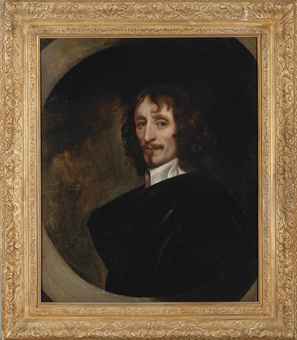It has been announced today that the Royal Academy (in partnership with the Royal Collection) is planning to mark its 250th anniversary in 2018 with an exhibition of paintings that were formerly in the art collection of King Charles I. Today I’m so stupidly excited about this I can barely type! I heard a rumour some time ago that such an exhibition was in planning, but then all went quiet and I thought it had been shelved. The sheer logistics of this particular undertaking are eye-watering, to say the least, and if they can pull it off it could well be one of the most remarkable shows in recent years.
As readers may know (and I’ve talked about this before), Charles was a prolific collector of art, and had his agents scour Europe to buy the very best paintings available, often scooping them from under the noses of other monarchs or wealthy nobility. By the time of his death, the quality and scale of his collection is said to have been one of the greatest in Europe, rendering what happened afterwards a painful and, to some eyes, unforgiveable act of cultural vandalism. Following the fall of the Royalist cause, and the flight of surviving royals and retainers into exile, Oliver Cromwell’s parliament decided to sell the late King’s goods, including his extensive art collection, to pay off Charles’s debts. Palaces, apartments and other royal buildings were opened up, their contents catalogued, and for the first time in British history, a monarch’s possessions were flogged to the public. From the insignificant and ordinary to the grand and priceless, everything went on sale (except for some religious-themed paintings that were considered blasphemous, torn to pieces and thrown into the Thames).
Much went abroad, and can be seen today in some of the most famous art galleries in the world, including the Louvre in Paris, and the Prado in Madrid. Charles II was able to reclaim (either with money, or with his own special brand of ‘gentle persuasion’) a large number of canvases, which now form part of the Royal Collection. Over hundreds of years, other works will have been lost, destroyed by fire, war, or some other unfortunate mishap. Some survivors will have fallen from view entirely, their presence in the collection forgotten, waiting for their true provenance to be uncovered.
This is the task faced by the Royal Academy as they put together their exhibition. Known works in British galleries, including the Royal Collection, will be loaned, while galleries abroad may be likewise persuaded to send their paintings back to London for the show. Still more must be hunted down through old inventories and centuries-old documents, in hopes of uncovering those that have gone astray.
The end result will be astonishing. The reconstruction, as far as is possible, of a royal art collection that was dispersed over 350 years ago. Masterpieces by Titian, Rubens, Van Dyck and Mantega will be seen together for the first time since the mid-1600s. It will surely be a once-in-a-lifetime event, as I can’t foresee this kind of reunion ever happening again, so if you can get to the Royal Academy between January and April 2018, this is one exhibition you cannot miss!

Here are the full details of the exhibition: Theartnewspaper.com
Further reading: “The Sale of the Late King’s Goods” by Jerry Brotton (2006), pub. Pan MacMillian.



















